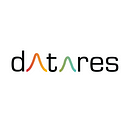Discover COVID-19 Vaccination Patterns In The United States
By: Binze Li (Lead), Kara Chu, Christine Shen, Paige Lee, and Huiyuan Li
Introduction
According to the Centers for Disease Control and Prevention (CDC), 81.2% of Americans ages 5 and up have received at least one dose of the COVID-19 vaccination. More than 215 million Americans are fully vaccinated with two doses. However, the vaccination distribution is not spread evenly between different geographical areas and social groups. Through data collected from various datasets, we can see the vaccination patterns with regards to important demographic and social factors.
How effective is the COVID-19 vaccine?
In Figure 1, based on the dataset, Rates of COVID-19 Cases or Deaths by Age Group and Vaccination Status from the CDC, shows the difference in COVID-19 cases between the vaccinated and unvaccinated population. The blue line represents unvaccinated Americans while the orange line represents fully vaccinated Americans in the months of September 2021 to December 2021. During this time period, people who were vaccinated had a lower risk of testing positive for COVID-19. According to the data, unvaccinated adults were 2.4 times as likely as vaccinated adults to test positive. Thus, the COVID-19 vaccine successfully lowered the risk of contracting the virus.
Although all three major vaccine types are highly effective (Moderna, Pfizer-BioNTech, and Johnson & Johnson’s Janssen), some types were administered more than others. As shown in Figure 2, Pfizer-BioNTech gave the most vaccinations with 326,031,904 doses administered by February 2022. Moderna had the second highest count at 208,399,875. Finally, Johnson & Johnson’s Janssen came third with 18,443,204 doses administered.
Discover COVID-19 Vaccination Rate Pattern By Demographics
In general, as time passes from December 2020 (when the COVID-19 vaccines were first made available to the public) to February 2022, the number of people vaccinated across all racial groups increased. For people of multiple races, Asians, blacks/African Americans, Native Hawaiian or Other Pacific Islanders, and American Indian or Alaska Natives, the number of people vaccinated appears to have remained low. However, these groups only make up a smaller proportion of the U.S. population anyways, so it actually makes sense that the number of people vaccinated is not as high as that of some other racial groups. Hispanics, people of unknown race, and whites, show larger increases in the number of people vaccinated, which makes sense since these racial groups make up a larger proportion of the U.S. population. The group with the largest number of people vaccinated and the largest rate of increase was labeled as “race_eth_known” in the CDC dataset, which didn’t provide a key for the names of the races that correspond to the labels used in the dataset. It is difficult to interpret this graph without knowing what the labels of each race means in practical terms.
Discover COVID-19 Vaccination Rate Patterns By States
As of February 14, 2022, the total number of vaccinated people is the highest in California, which is consistent with the fact that California has the largest population of all the states. Texas, which is the second most populous state, is lighter in color because it has the second highest number of vaccinated people. Generally, the number of vaccinated people in each state is proportional to the number of people in the state.
Based on Figure 5, we can see the change of vaccination rates of different states in the United States. In general, the vaccination rates increase for each state. By February of 2022, the vaccination rates of states like Massachusetts, New York, and New Jersey have risen to over 60%. It’s interesting to point out that despite California having the most number of vaccinated people as shown in Figure 4, it doesn’t have the highest vaccination rate. By further observing the trend of vaccination rate change, the increase of vaccination rate dampens after April of 2021. The states with comparably lower vaccination rates are Tennessee, Georgia, and Indiana. The difference of vaccination rates between Massachusetts and Tennessee is around 20%.
Figure 6 shows the association between education attainment and COVID-19 vaccination. Each black dot in the graph represents a state in the United States. The y-axis represents COVID-19 vaccination rate in each state, calculated by dividing the COVID-19 fully-vaccinated (two doses) population (data from CDC) by the total population in each state (data from worldpopulatonreview.com). The x-axis shows the percentage of people who get a degree of bachelors or higher in a state (data obtained from worldpopulatoinreview.com).
From the graph, we can see a strong positive correlation between education attainment and COVID-19 vaccination rate with a p-value of 6.68e-11. This suggests that the higher education attainment is, the higher the percentage of COVID-19 vaccination rate. The state of Massachusetts has the highest percentage of bachelor population of about 44%, and it has a high vaccination rate of about 76%. Compared to Massachusetts, the state of West Virginia has the lowest percentage of bachelor population which is about 21%, and it indeed has a low COVID-19 vaccination rate of 57%. The association between education attainment and COVID-19 vaccination makes sense because people who receive a higher education tend to be more health-conscious and are more likely to receive COVID-19 vaccines.
Conclusion
By collecting data from various datasets, our team has discovered patterns of COVID-19 vaccination rate in the United States. Factors associated with COVID-19 vaccination rate, such as geographical locations, demographic factors and education attainment, were identified. We hope this article can provide some insights into COVID-19 vaccination data.
Sources:
https://worldpopulationreview.com/state-rankings/educational-attainment-by-state
https://worldpopulationreview.com/states
